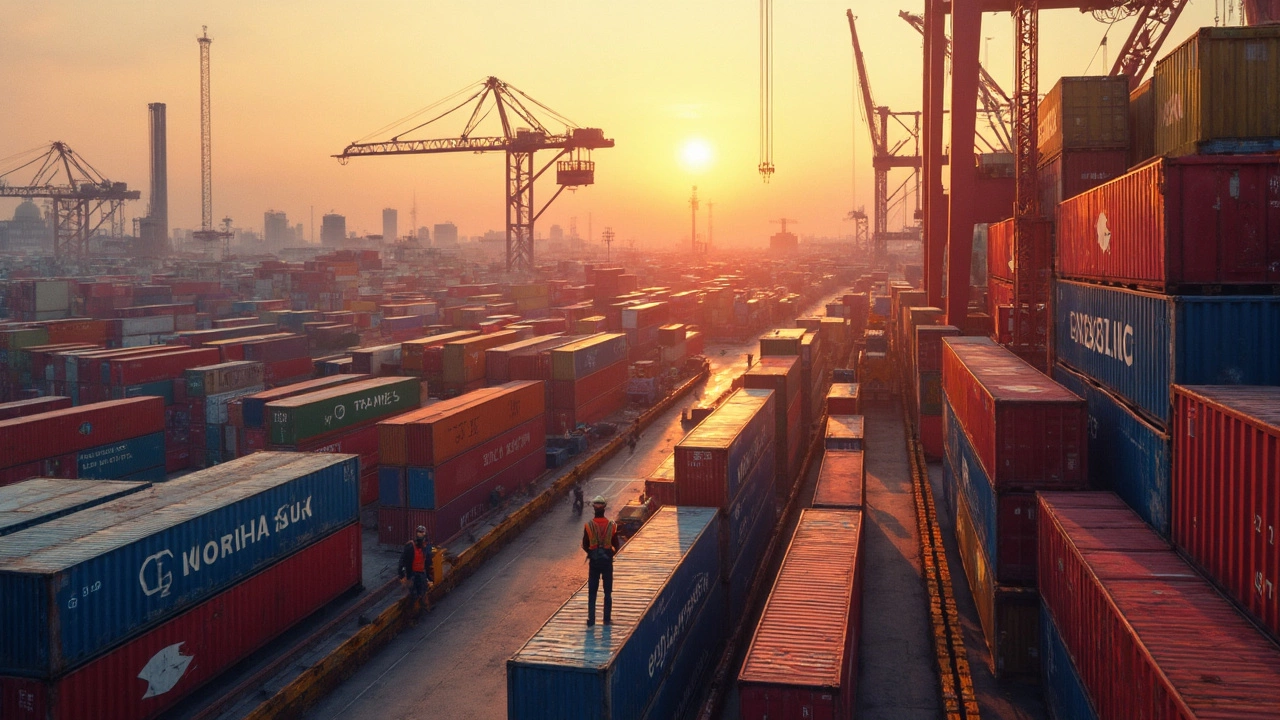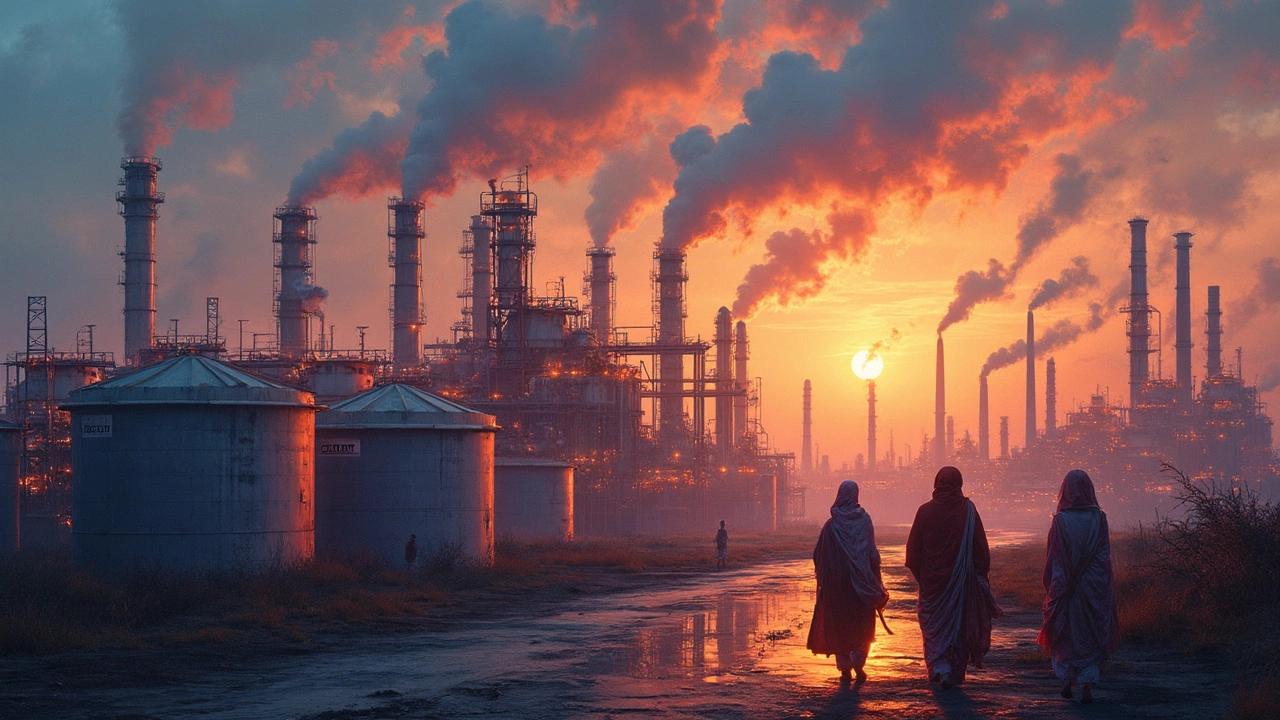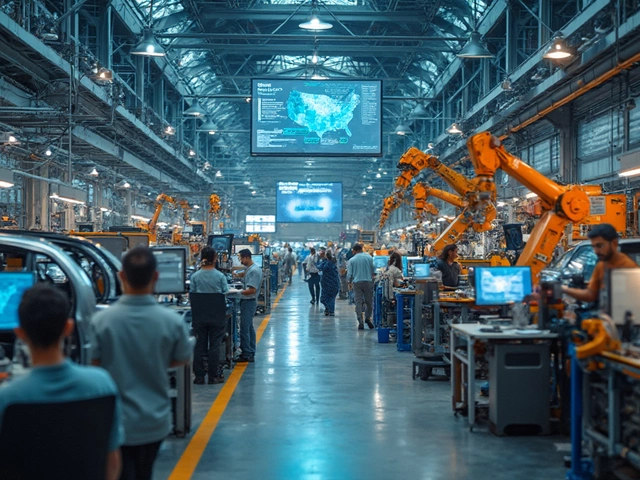
When people think about imports to India, the first thing that pops into their minds might not be chemicals. But you'd be surprised at how significant chemical imports are to the Indian economy. From boosting local manufacturing to supporting industries like agriculture and healthcare, these chemicals are a silent driving force behind India’s industrial engine.
Did you know that India's import of Active Pharmaceutical Ingredients (APIs) is a big deal? The pharmaceutical industry leans heavily on them to churn out medications for both domestic use and exports. Not to mention petrochemicals, which are crucial for the plastic and textile industries. With India's growth trajectory seemingly unstoppable, understanding what chemicals are imported can give us a peek into the country's economic strategies.
If you’re curious about where these chemicals come from, well, China is a major player, acting as a significant supplier. However, India also sources from countries in Europe and the USA, each adding a unique part of the puzzle. The dynamics of chemical imports not only reveal the interconnectedness of global industries but also highlight the challenges that come with dependency on foreign suppliers.
- Overview of India's Chemical Imports
- Major Types of Imported Chemicals
- Top Countries India Imports Chemicals From
- Impact on Local Industries
- Challenges in Chemical Imports
- Future Trends in Chemical Importation
Overview of India's Chemical Imports
India stands as one of the largest importers of various chemicals globally, a necessity driven by its prolific manufacturing sector. From petrochemicals to specialty chemicals, these imports significantly support industries ranging from pharmaceuticals to agriculture.
Why does India import so many chemicals? Simply put, local production can't meet the high demand. The manufacturing sector, particularly pharmaceuticals, relies heavily on imported chemicals to maintain its growth momentum. Active Pharmaceutical Ingredients (APIs) are a prime example, with a significant portion sourced externally to produce everything from common pain relievers to high-end cancer treatments.
The Major Imports: A Snapshot
India imports a broad spectrum of chemicals, but some categories stand out:
- Petrochemicals: These are fundamental in producing plastics and synthetic rubber, supporting product manufacturing across various industries.
- Specialty chemicals: Used in agriculture, textiles, and automotive, these are vital for enhancing products' performance and quality.
- APIs: The backbone of India's booming pharmaceutical sector, essential for drug formulation and production.
To give an idea of scale, here's a quick stat: a whopping 70% of the APIs used by the Indian pharma industry come from international markets – a testament to their importance.
Sources of Imports
When talking about who supplies these chemicals to India, China tops the list as the biggest source, especially for APIs and basic chemicals. But the story doesn't end there; European countries and the USA also play crucial roles, particularly in supplying high-value specialty chemicals.
All in all, India’s chemical imports are a cornerstone of its industrial strategy, ensuring the nation remains a global manufacturing hub. The reliance might pose challenges, but for now, imports continue to fuel growth and innovation across sectors.
Major Types of Imported Chemicals
India's import landscape in the chemical sector is incredibly diverse, catering to several crucial industries. One of the biggies in this domain is Active Pharmaceutical Ingredients, or APIs. The country, known for its pharma production, relies on these chemicals to create medicines that then fly off to markets worldwide. So, when we talk about significance, APIs top the chart.
Next up, we have petrochemicals. These are indispensable when it comes to manufacturing plastics, synthetic fibers, and even certain types of rubbers. A huge chunk of these petrochemicals that feed into industries comes from imports, making them a vital part of the import matrix.
Specialty Chemicals
Then come the specialty chemicals, which are used in smaller, often very specific applications. They might not be household names, but these imported chemicals play vital roles in crop protection, paints, dyes, and construction chemicals. You might not see them up close, but they’re involved in your daily life more than you think.
Fertilizers are another key category. Despite having a large agriculture base, India imports a significant amount of fertilizers to meet its extensive farming needs. Phosphate and potash fertilizers are particularly high on the list, primarily sourced from countries like Canada and Jordan.
Industrial Gases
We also can't ignore industrial gases such as helium or hydrogen. These are crucial for sectors like electronics, welding, and even healthcare. The demand for such gases has been growing, nudging up their import numbers.
All these imported chemicals together make a significant impact, weaving the fabric of India’s industrial growth. The sheer diversity points to how indispensable foreign chemical supplies are for sustaining and expanding the nation's manufacturing base.
Top Countries India Imports Chemicals From
India has a well-established network when it comes to chemical imports, tapping into sources from across the globe. While China stands as the heavyweight in this arena, providing a large chunk of the chemicals needed by Indian industries, there's more to the story than just one giant.
China: The Chemical Powerhouse
It's no secret that China is one of the biggest suppliers of chemicals to India. Be it Active Pharmaceutical Ingredients (APIs) or specialty chemicals, China offers a wide variety that caters to India’s industrial needs. The sheer volume is staggering and reflects the close trade ties between the two countries.
European Imports: Quality and Precision
Beyond China, European countries like Germany and Switzerland also play a crucial role, especially in sectors that demand precision and quality. These countries are known for their advanced chemical manufacturing techniques, making them reliable suppliers for India’s more niche market segments.
United States: A Key Player
Despite the geographical distance, the U.S. remains an essential source for certain high-end and innovative chemicals. This partnership isn't just based on supply but also on the exchange of technological expertise and innovations.
| Country | Share in Imports (%) |
|---|---|
| China | 36% |
| Germany | 12% |
| United States | 10% |
| Switzerland | 8% |
These major players help ensure that India not only meets its domestic demands but also competes effectively on a global scale. Each country's contribution highlights a unique facet of India's import strategy— from the sheer volume of basic chemicals to higher-end specialty and precision chemicals. So next time you think about the chemicals coming into India, it's useful to remember they're rooted in a complex web of international relations and economic strategies.

Impact on Local Industries
India's reliance on imported chemicals has a pretty significant ripple effect on local industries. For starters, these imports play a huge role in advancing the pharmaceutical sector. With a bulk of Active Pharmaceutical Ingredients (APIs) coming from outside, local drug manufacturers can keep up with market demands. This setup helps India maintain its title as the pharmacy of the world, pushing out generic drugs at affordable prices.
The story isn't too different for the textile and plastic industries either. Petrochemicals, which are essential for creating various plastics and synthetic fibers, largely come from imports. This means that everything from your everyday clothing to household items is partly thanks to international trade. By bringing in specific chemicals, local manufacturers can focus on turning raw materials into finished goods efficiently.
Boosting Agriculture
Agriculture isn’t left out of the equation. Specialty chemicals used in fertilizers and pesticides are often imported to improve crop yield and pest resistance. This support elevates local farming practices, making them more competitive globally. With a growing population, ensuring food security is crucial, and chemical imports are a key player in this field.
Economic Dependencies and Opportunities
However, heavy reliance on imports isn't without its challenges. It builds economic dependencies that can be risky. If trade relations sour or supply lines face disruption, industries might scramble to keep operations smooth. This encourages local manufacturers to innovate, potentially creating more sustainable and self-sufficient production practices in the long run.
All said and done, the import of chemicals provides short-term advantages to various sectors, enabling them to thrive. As India's industrial landscape evolves, these imports are likely to make way for more strategic collaborations and local innovations.
Challenges in Chemical Imports
Importing chemicals into India is not as straightforward as it might sound. One of the main hurdles is the ever-changing import regulations and tariffs that the government imposes. These regulations can shift rapidly, responding to both global economics and local political pressures, leaving importers in a constant state of adjustment.
A significant concern for Indian importers is the dependency on a few countries for essential chemicals. For instance, China is a major supplier, especially for certain Active Pharmaceutical Ingredients (APIs) and other raw materials. This heavy reliance creates a risk if there are geopolitical tensions or trade disputes, which can disrupt supply chains and lead to shortages.
Logistical challenges also come into play. Infrastructure for processing and storing chemicals safely is essential. There’s the ever-present worry about handling hazardous materials and the costs associated with compliance to environmental and safety standards.
Cost and Competition
Prices of imported chemicals can be volatile. Exchange rate fluctuations can lead to increased costs, directly impacting profitability for local manufacturers. Moreover, because of stiff competition from other importing countries, Indian manufacturers often face narrow profit margins.
There's also a competitive challenge domestically. Indian manufacturers of the same chemicals can undercut prices to gain market share, leading to intense competition which sometimes downplays quality for the sake of cost.
Technology and Innovation Barriers
Another critical challenge is the technological gap. Imported chemicals, especially specialty ones, often require advanced technologies for their efficient use and integration into production processes. Indian companies may need to invest heavily in research and development, or in acquiring new technology, to keep up with global standards, which can be a major financial burden.
In summary, while importing chemicals into India is crucial for various industries, it does come with a fair share of complications. Navigating these pitfalls requires strategic planning, awareness of global market trends, and a collaborative approach between the government and industry stakeholders to mitigate these challenges effectively.
| Challenge | Impact |
|---|---|
| Regulatory Fluctuations | Increased risk and costs for importers |
| Dependency on Foreign Suppliers | Supply chain vulnerabilities |
| Logistical Issues | High compliance costs and safety risks |
Future Trends in Chemical Importation
The landscape of chemical importation in India is poised for some interesting changes in the next few years. With rapid industrial growth and environmental policies becoming more stringent, these trends are worth keeping an eye on.
Green Chemistry on the Rise
There's a growing focus on sustainable practices, and India's chemical manufacturers are not left out. Companies are increasingly importing eco-friendly chemicals, which are less harmful to the environment. This move is appealing not just for regulatory compliance but also for meeting the demand of an increasingly eco-conscious market.
Shift in Trading Partners
While China remains a significant supplier, India is diversifying its sources to avoid over-dependence on any single nation. There's a marked increase in imports from European countries and Japan, especially for specialty chemicals. This shift could lead to more stable supply chains and potentially better pricing.
Technological Influence
With technology advancing at a breakneck pace, the importation of chemicals like those used in cutting-edge tech, such as nanotechnology and biotechnology, is expected to rise. These chemicals are crucial for developing new products and enhancing existing ones.
Increasing Local Production
To reduce reliance on imports, India is bolstering its local chemical manufacturing capacities. This is part of a larger 'Make in India' initiative to increase self-sufficiency across various industries. However, it's a gradual process, so imports will remain significant in the short to medium term.
| Year | Chemical Imports | Local Production |
|---|---|---|
| 2025 | 45% Import Reliance | 55% Local Production |
| 2030 | 35% Import Reliance | 65% Local Production |
This planned reduction in reliance showcases a balanced approach to ensure that the country can still tap into global innovation while nurturing its own chemical industry.
With these trends in mind, businesses in India can strategically position themselves to adapt and thrive in a constantly evolving market. Being aware of these shifts not only prepares one for the future but also offers a competitive edge in grabbing emerging opportunities.




